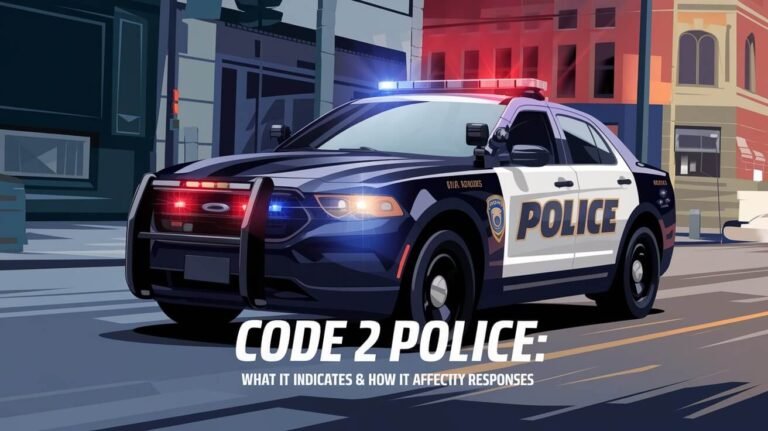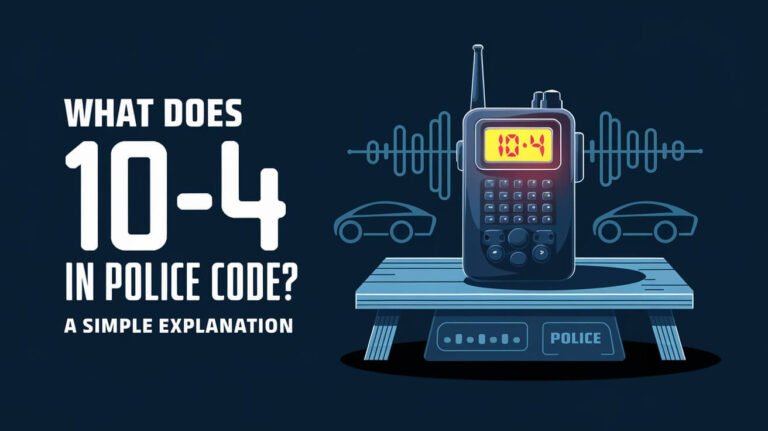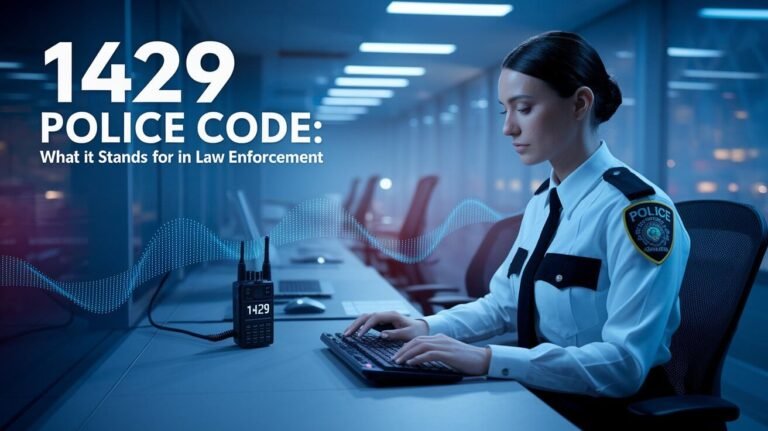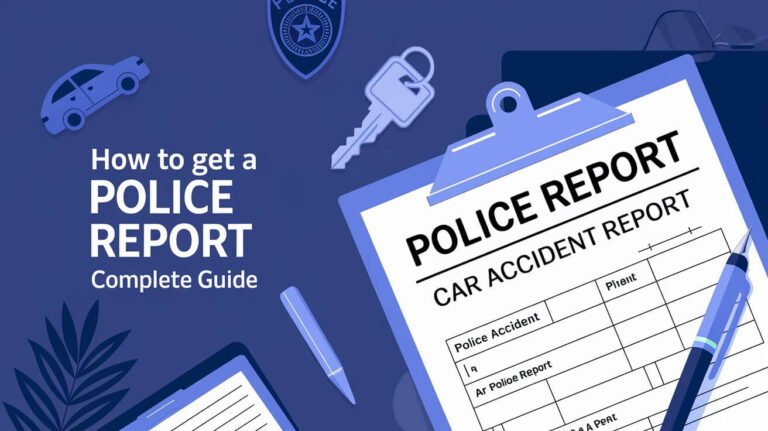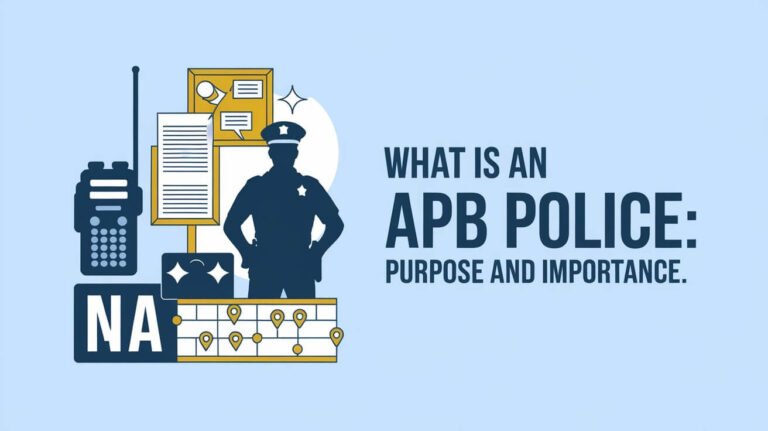311 Police Code and Its Role in Non-Emergency Services

When calling the authorities, it’s essential to know when to dial the emergency number and when to use a non-emergency police number. The 311 code is used for non-emergency situations, allowing citizens to report incidents that don’t require an immediate response.
This police radio code helps law enforcement agencies manage calls more efficiently, ensuring that emergency services are available for critical situations. By using 311 services, individuals can report noise complaints, minor crimes, or other issues that don’t necessitate an emergency response.
Key Takeaways
- The 311 code is designated for non-emergency situations.
- It helps law enforcement manage calls more efficiently.
- Citizens can report minor incidents without tying up emergency lines.
- Using 311 services ensures emergency services are available for critical situations.
- It’s an essential tool for effective law enforcement communication.
The 311 Police Code Explained
The 311 police code is a vital component of law enforcement communication, playing a crucial role in distinguishing non-emergency situations from emergency calls.
It is designed to streamline the reporting of incidents that do not require an immediate response from law enforcement, thereby optimizing the use of emergency services.
Core Functions and Purpose
The primary function of the 311 police code is to facilitate the reporting of non-emergency incidents, allowing citizens to notify law enforcement about issues that need attention but are not urgent.
This system helps in documenting minor incidents, community safety concerns, and requests for city services, thereby enhancing public safety infrastructure.
Utilizing the 311 code, law enforcement agencies can allocate resources more effectively, ensuring that emergency services remain available for critical situations.
Position in Public Safety Infrastructure
The 311 police code is an integral part of the broader public safety infrastructure, working in tandem with emergency services like 911 to ensure a comprehensive response to various situations.
It supports non-emergency services by providing a dedicated channel for citizens to report incidents that are not life-threatening or emergencies, thus maintaining the balance between emergency and non-emergency responses.
This distinction is crucial for the efficient allocation of law enforcement resources and for maintaining public trust in the emergency response system.
Origins and Development of 311 Services
As cities grew, the need for a non-emergency number became apparent, leading to the birth of 311 services. The development of 311 services began as a response to the need for a dedicated non-emergency contact number, aiming to reduce the burden on emergency services and improve public safety infrastructure.
Birth of the Non-Emergency Number
Concept of a non-emergency number was first introduced to differentiate between emergency and non-emergency situations. The first 311 system was implemented in Baltimore in 1996, marking the beginning of a new era in public safety. This innovation allowed citizens to report non-emergency incidents without clogging the 911 lines.
Key Implementation Phases
The implementation of 311 services involved several key phases, including planning, testing, and rollout. Cities typically started by assessing their public safety needs and identifying the resources required to support a 311 system. A notable example is New York City’s 311 system, launched in 2003, which became a model for other cities. The table below highlights the major steps involved in implementing 311 services:
| Phase | Description | Key Activities |
|---|---|---|
| Planning | Assessing public safety needs and resource allocation | Needs assessment, budget allocation |
| Testing | Pilot testing of the 311 system | System integration, staff training |
| Rollout | Full implementation of 311 services | Public awareness campaigns, system launch |
Recent System Upgrades
In recent years, 311 services have undergone significant upgrades to enhance their functionality and user experience. Modern 311 systems often include mobile applications and web-based reporting platforms, allowing citizens to report incidents more easily. These upgrades have improved the efficiency of 311 services and increased public engagement.
311 vs. 911: Critical Differences
When it comes to contacting authorities, knowing whether to dial 311 or 911 can make all the difference. The distinction between these two numbers is crucial for ensuring that emergency services are reserved for situations that truly require immediate attention, while non-emergency inquiries and issues are directed to the appropriate channel.
When to Dial 911
911 is designated for emergency situations that demand immediate response, such as life-threatening incidents, crimes in progress, or situations where there’s an imminent risk to public safety. Examples include:
- Reporting a crime in progress
- Medical emergencies or life-threatening situations
- Fires or other hazardous situations
Dialing 911 for non-emergencies can divert resources away from critical situations, potentially putting lives at risk. It’s essential to use 911 judiciously and only when there’s a genuine emergency.
Appropriate Scenarios for 311 Calls
On the other hand, 311 is for non-emergency situations, providing a channel for citizens to report issues that don’t require an immediate emergency response. Typical scenarios for 311 calls include:
- Reporting minor incidents or nuisances, such as noise complaints or graffiti
- Requesting city services, like trash pickup or street repairs
- Providing information or feedback about city services
Using 311 for non-emergency issues, citizens can help keep 911 lines open for emergencies, enhancing the overall efficiency of public safety services.
Typical 311 Police Code Applications
The 311 police code is utilized in various capacities, enhancing public safety and city services. This section explores the diverse applications of the 311 system, demonstrating its utility in modern municipal operations.
Minor Incident Documentation
The 311 police code is frequently used for documenting minor incidents that do not require an immediate emergency response. This includes reporting minor crimes, noise complaints, or other non-life-threatening situations. By using 311 for these incidents, law enforcement can allocate resources more efficiently.
Community Safety Concerns
Community members can use 311 to report safety concerns, such as streetlight outages, potholes, or suspicious activities. This proactive approach helps maintain public safety and enhances community-police relations.
City Service Requests
Residents can also utilize 311 to request various city services, including waste collection, graffiti removal, and information about municipal programs. This streamlines the process of addressing community needs and improves the overall quality of urban living.
| City | Common 311 Uses | Benefits |
|---|---|---|
| New York | Noise complaints, graffiti removal | Enhanced quality of life |
| Chicago | Streetlight repairs, pothole fixes | Improved infrastructure maintenance |
| Los Angeles | Information requests, service inquiries | Streamlined municipal services |
Leveraging the 311 police code, cities can improve their service delivery, enhance public safety, and foster a more responsive municipal government.
Behind the Scenes of 311 Operations
The effectiveness of 311 services is rooted in their operational framework. Understanding this framework is crucial for appreciating how these services contribute to public safety and municipal efficiency.
Call Center Structure
311 call centers are the frontline of these services, handling a vast array of citizen inquiries and concerns.
Staffing and Training
Staffing these centers are trained personnel equipped to handle diverse situations, from minor infractions to complex community concerns. Comprehensive training programs ensure that staff can effectively manage cases and provide timely resolutions.
Technology Systems
The backbone of 311 call centers is their technology infrastructure, which includes advanced software for case management and response triage. These systems enable efficient data collection, case assignment, and resolution tracking.
Case Management Procedures
Effective case management is pivotal to the success of 311 services. This involves a systematic approach to handling citizen reports, from initial receipt to resolution.
- Accurate data collection
- Timely case assignment
- Regular status updates
Response Triage Methods
Response triage is critical in ensuring that cases are addressed in order of urgency and importance. This involves assessing the nature of the report and allocating resources accordingly. Efficient triage methods enable 311 services to manage a high volume of requests while maintaining public safety.
311 Systems Across Major US Cities
Major US cities have adopted 311 systems in diverse ways, tailoring them to their unique urban challenges. This customization reflects the different needs and priorities of each city’s residents and municipal services.
New York’s 311 Model
New York City’s 311 system is one of the most comprehensive, offering a wide range of services through a single, easy-to-remember number. The system handles over 20,000 calls daily, making it a crucial tool for city residents to report issues and request services.
Chicago’s Approach to 311
Chicago has integrated its 311 system with various city services, allowing residents to report concerns and access information efficiently. The city’s approach focuses on streamlining service requests and improving response times.
West Coast 311 Implementations
Cities on the West Coast, such as Los Angeles and San Francisco, have also implemented 311 systems tailored to their specific needs. These cities have focused on enhancing community engagement and providing timely responses to resident inquiries.
The diversity in 311 implementations across major US cities highlights the adaptability of this service model to different urban environments.
Digital Evolution of 311 Reporting
The digital evolution of 311 reporting has transformed the way citizens interact with their local governments. This transformation is largely attributed to advancements in technology, which have enabled the development of various digital channels for reporting non-emergency incidents.
One of the significant advancements in 311 reporting is the development of mobile applications. These apps allow citizens to report incidents and request services using their smartphones.
311 Mobile Applications
311 mobile applications have made it easier for citizens to access 311 services. For example, many cities have developed their own apps, such as New York City’s 311 app, which allows residents to report issues and request city services. The key features of these apps include:
- Easy reporting of non-emergency incidents
- Real-time tracking of service requests
- Access to city services and information
Web-Based Reporting Platforms
In addition to mobile apps, many cities have also developed web-based reporting platforms. These platforms provide an alternative channel for citizens to report incidents and request services online. They often include features such as:
- Online submission forms for reporting incidents
- Status updates on service requests
- Links to relevant city resources and information
Social Media Reporting Channels
Some cities have also started using social media as a channel for 311 reporting. This allows citizens to report incidents and request services through popular social media platforms. The benefits of using social media for 311 reporting include:
- Increased accessibility for citizens who are active on social media
- Faster response times for service requests
- Improved engagement between citizens and local government
Digital evolution of 311 reporting has not only improved access to city services but also enhanced the overall efficiency of municipal operations. By providing multiple channels for reporting and requesting services, cities can better serve their citizens and improve their quality of life.
Advantages of Robust 311 Systems
The advantages of a well-functioning 311 system are multifaceted, impacting emergency services, community relations, and municipal planning. A robust 311 system is instrumental in streamlining various city services and enhancing the overall quality of life for citizens.
Emergency Service Efficiency
A key benefit of a robust 311 system is the improvement in emergency service efficiency. By handling non-emergency calls effectively, 311 systems free up 911 lines for life-threatening situations, ensuring that emergency responders are available when they are needed most.
Police-Community Relationship Enhancement
311 systems also play a significant role in enhancing police-community relations. By providing a platform for citizens to report concerns and request services, 311 fosters a sense of community and cooperation between law enforcement and the public.
Data-Driven Municipal Planning
The data collected through 311 systems is invaluable for data-driven municipal planning. This data can be analyzed to identify trends and patterns, informing policy decisions and resource allocation.
Crime Pattern Analysis
One of the critical aspects of 311 data is its ability to facilitate crime pattern analysis. By examining the types and locations of incidents reported through 311, law enforcement can better understand crime trends and develop targeted strategies.
Resource Allocation Insights
Furthermore, 311 data provides resource allocation insights, helping municipalities to allocate resources more effectively. This ensures that services are distributed where they are needed most, optimizing the use of municipal resources.
Obstacles Facing 311 Police Code Systems
Despite its benefits, the 311 police code system faces several challenges that can impact its effectiveness. The successful implementation of 311 services requires significant resources and public awareness.
Budget and Staffing Limitations
One of the primary challenges facing 311 systems is budget constraints. Limited financial resources can hinder the ability to maintain a fully staffed call center, potentially leading to longer wait times and decreased service quality. Adequate staffing is crucial for handling the volume of calls efficiently.
Public Education Gaps
Another significant obstacle is the need for public education. Many citizens are unaware of the appropriate use of 311 services, often confusing it with 911 or not understanding the types of issues that can be reported through 311. Effective public education campaigns are essential to bridge this knowledge gap.
Service Delivery Timeframes
Service delivery timeframes also pose a challenge. The time taken to respond to and resolve issues reported through 311 can vary significantly. Improving response times requires efficient case management procedures and adequate resource allocation.
Addressing these challenges is crucial for the optimal functioning of 311 police code systems. By understanding and mitigating these obstacles, municipalities can enhance the effectiveness of their 311 services, leading to better community engagement and public safety.
Effective 311 Call Strategies
To maximize the utility of 311 services, it’s essential to understand how to make effective 311 calls. By being prepared and knowing what to expect, callers can ensure that their concerns are addressed efficiently.
Pre-Call Information Gathering
Gathering necessary information before calling 311 can significantly enhance the effectiveness of the call. This includes having relevant details such as the location of the issue, a clear description of the problem, and any relevant identifiers like property addresses or permit numbers.
- Location details: Address, nearest cross street, or landmark
- Clear description of the issue
- Relevant identifiers: Property addresses, permit numbers
Report Tracking Techniques
After making a 311 call, it’s crucial to track the report to ensure that the issue is being addressed. Callers can use the provided report number to check the status online or follow up with another call.
| Tracking Method | Description |
|---|---|
| Online Status Check | Use the report number to check the status online |
| Follow-up Call | Call 311 again to inquire about the status |
311 Police Code Innovation Trends
The future of 311 services is being shaped by innovative technologies and smart city initiatives. As urban areas continue to grow, the need for efficient, technology-driven solutions becomes increasingly important.
Emerging Technologies in 311 Services
Emerging technologies such as Artificial Intelligence (AI), Internet of Things (IoT), and mobile applications are enhancing the capabilities of 311 services. AI-powered chatbots are being used to handle initial customer inquiries, streamlining the reporting process.
- Improved response times
- Enhanced data collection
- Increased accessibility
Smart City 311 Integration
The integration of 311 services into smart city initiatives is revolutionizing urban management. By connecting 311 systems with other city infrastructure, municipalities can create a more cohesive and responsive urban environment.
| Integration Aspect | Benefit |
|---|---|
| Data Sharing | Enhanced situational awareness |
| Service Coordination | Streamlined response efforts |
| Predictive Analytics | Proactive issue resolution |
Conclusion
The 311 police code is a vital tool for non-emergency situations, allowing citizens to report incidents and concerns without overwhelming emergency services.
Throughout this article, we have explored the origins and development of 311 services, its critical differences with 911, and its various applications in community safety and city service requests.
In conclusion, the 311 police code plays a significant role in maintaining public safety infrastructure, enhancing police-community relationships, and informing municipal planning through data-driven insights.
As cities continue to evolve, the 311 system is adapting to emerging technologies and smart city integration, ensuring its continued relevance and effectiveness.
Understanding the 311 police code and its utility, citizens can contribute to a safer and more responsive community, making it a valuable resource for residents across the United States.
FAQ
What is the purpose of the 311 police code?
The 311 police code is used for non-emergency situations, allowing citizens to report incidents or request city services without tying up emergency lines.
How does 311 differ from 911?
911 is for emergency situations that require immediate attention, such as crimes in progress or life-threatening situations, while 311 is for non-emergency situations.
What kind of situations are suitable for 311 calls?
311 calls are suitable for reporting minor incidents, addressing community safety concerns, and requesting city services such as trash collection or street repairs.
How do 311 services benefit law enforcement agencies?
311 services help law enforcement agencies by freeing up emergency lines for critical situations, improving response times, and providing valuable data for crime pattern analysis and resource allocation.
What are some of the challenges facing 311 police code systems?
311 police code systems face challenges such as budget and staffing limitations, public education gaps, and service delivery timeframes, which can impact their effectiveness.
How can citizens make effective 311 calls?
Citizens can make effective 311 calls by gathering information before calling, being clear and concise about the issue, and following up on their reports.
What role do emerging technologies play in 311 services?
Emerging technologies such as mobile applications, web-based reporting platforms, and social media reporting channels are enhancing the accessibility and functionality of 311 services.
How do 311 systems contribute to smart city initiatives?
311 systems contribute to smart city initiatives by providing valuable data for municipal planning, improving public safety, and enhancing the overall quality of life for citizens.
What are the benefits of having a robust 311 system?
A robust 311 system improves emergency service efficiency, enhances police-community relationships, and provides data-driven insights for municipal planning.
How have major US cities implemented 311 systems?
Major US cities such as New York, Chicago, and cities on the West Coast have implemented 311 systems in various ways, with differences in their approaches to staffing, technology, and service delivery.

